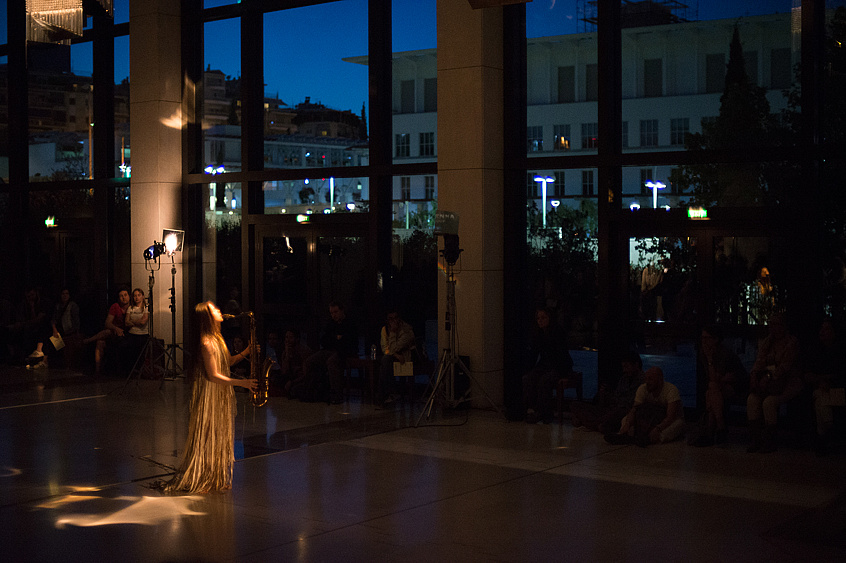Inaugurated in 1991, Megaron was the outcome of the long efforts of an association of eminent social figures, musicians, and music lovers. The hall was built and has since operated on corporate, private, and state funds, with the campaign for its completion directed by Christos Lambrakis, who helped shape Greece’s political climate following the fall of the military junta. Notwithstanding its costly maintenance and operation, the Athens Concert Hall brought Greece into the international music circuit and has continually drawn people from various social strata, political convictions, and ages. As of 2017, Megaron is owned by the Greek government—and hence the public.
During the one hundred days of documenta 14 in Athens, artist Apostolos Georgiou’s figures pay a visit to Megaron via a series of paintings scattered around the building’s empty anterooms with their heavy, gold, ornate chandeliers, switched on only during concerts, their protagonists endlessly entangled in paradoxical and menacing social rituals of the recent past and present. Part of the extensive music program presented by documenta 14 takes center stage at Megaron’s concert halls. Major works such as Henryk Górecki’s Symphony No. 3, Op. 36 (Symphony of Sorrowful Songs) and Frederic Rzewski’s The People United Will Never Be Defeated! will be performed, as well as pieces by singular contemporary composers like Julius Eastman, Éliane Radigue, and Jakob Ullmann. Joaquín Orellana Mejía premieres his new work Sinfonía desde el Tercer Mundo (Symphony from the Third World), a culmination of years of experimentation with choirs and orchestras as well as his own invention, the útiles sonoros (sound utensils), which are on display at Megaron around the time of his performance.
The music program at Megaron brings attention to crucial sociopolitical moments expressed through or exemplified by musical compositions and their makers. As an extension of the regular programming at Megaron, the series also brings about dissimilar ways of listening and an encounter with sound’s dissident and defining mechanisms. In addition to the concert program, a set of spatial interventions making use of Megaron’s architectural features engages the building’s foyers and various other interstitial spaces, questioning the “ideal” musical conditions such institutions typically strive for and, in a reversal of the norm, foregrounding space and architecture as the principal element in sonic expression.






